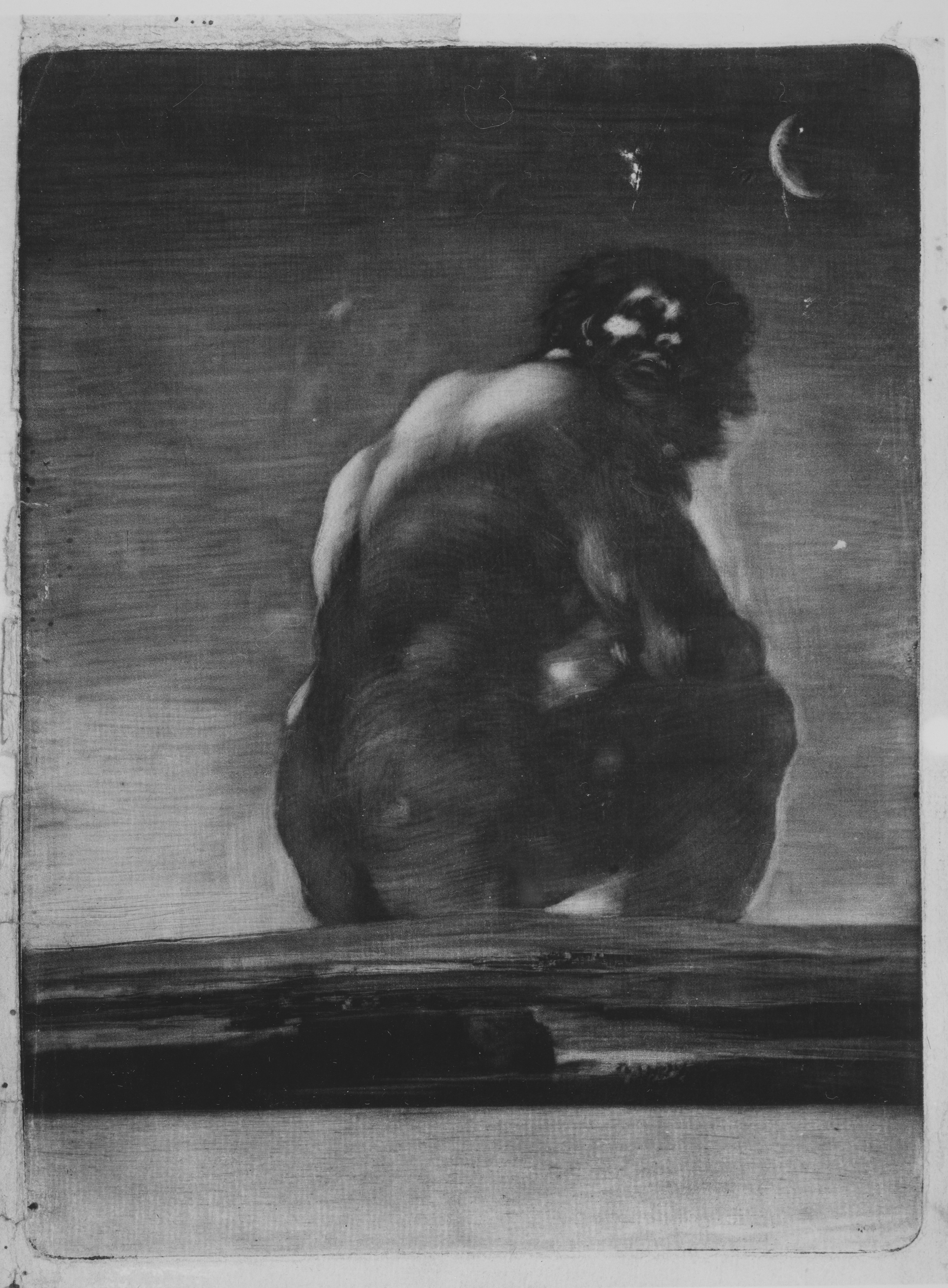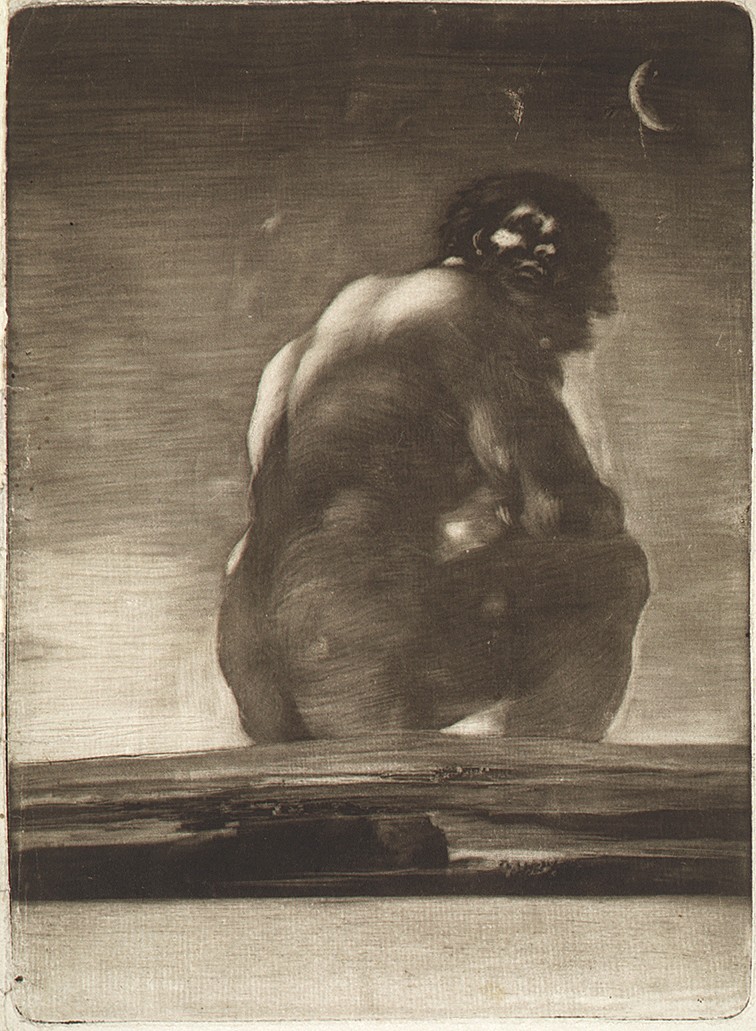Seated Giant
Goya (Francisco de Goya y Lucientes) Spanish
Not on view
Executed entirely in aquatint, this is one of Goya’s most technically ambitious yet enigmatic prints. A giant dominating a desolate landscape is captured in a moment of transition. He turns his head toward us as if roused from deep thought, slumber, or despondency. Perhaps he had been awaiting the dawning of a new day and turns because that moment has come. Goya used aquatint to achieve subtle effects of light and dark—an apt technique for depicting a crepuscular atmosphere and conveying the sense of unease that pervades the composition.
It is not known exactly when Goya made this print. It has been dated from around 1800 or ‘by 1818'. There is a close relationship between the print and the famous painting of the Colossus in the Museo del Prado, a painting thought to relate to the Peninsular War, symbolizing either a rampaging tyrant or a protector against enemy invaders. In the print, positioned above the desolation, the giant might embody sorrow in war’s aftermath, the bleak landscape symbolizing brutal conflict and the lower white strip suggesting obliteration.
The painting has long been attributed to Goya, but in 2008 the Prado Museum designated it as a studio work and not by the master himself. There is no consensus, and disagreement continues, but there is growing support for it to be returned to Goya. The print is critical in the debate about the authorship of the painting. If the painting is a studio work then the artist borrowed the figure of Colossus from Goya’s print. Given his imagination and originality, it seems highly unlikely that Goya would borrow the figure from someone else’s painting to use as the basis for his print.
(Mark McDonald)
Due to rights restrictions, this image cannot be enlarged, viewed at full screen, or downloaded.
This artwork is meant to be viewed from right to left. Scroll left to view more.







